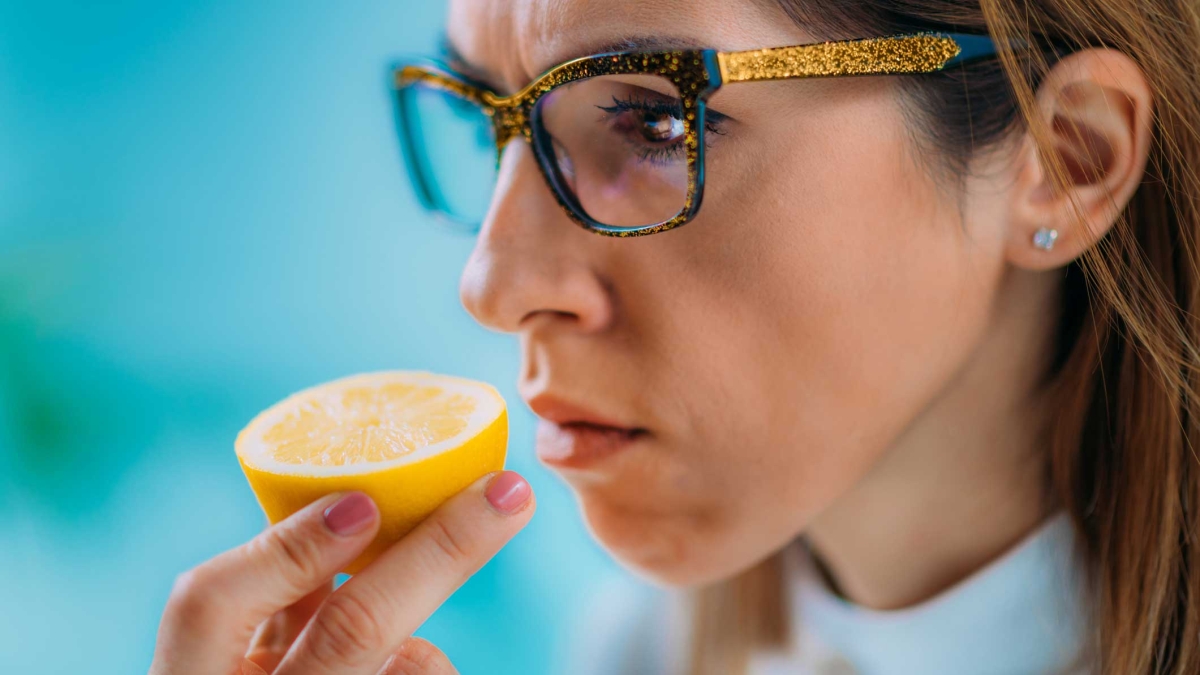ASU researcher Rick Gerkin has teamed up with two other neuroscientists under a new National Institutes of Health (NIH) grant aimed at developing inexpensive, at-home “smell tests” to help identify new cases of COVID-19 and provide warning of a community outbreak in time to thwart it.
Rick Gerkin
“This new study will build upon earlier investigations showing that olfactory loss is a strong predictor of COVID-19,” said Gerkin, an associate research professor in ASU’s School of Life Sciences who examines how smell perception, learning and behavior are represented in the brain.
Gerkin’s research applies statistical techniques to understand how the brain organizes and represents odor information. So, when early patient reports at the start of the COVID-19 pandemic identified smell loss as a primary COVID-19 symptom, he leapt into action with his collaborators to try to make a difference.
“Developing a smell test for COVID-19 could be a real game changer as a reliable, rapid and low-cost diagnostic home or workplace test for COVID-19,” Gerkin said.
The new two-year, $912,000 smell study is funded by the Coronavirus Aid, Relief, and Economic Security (CARES) Act and the NIH’s RADx-rad program. The project is part of an NIH initiative that has awarded over $107 million to support new, non-traditional approaches and reimagined uses of existing tools to address gaps in COVID-19 testing and surveillance.
“To solve a problem as complicated as COVID-19, we need ideas, tools and technologies that challenge the way we think about pandemic control,” NIH Director Francis S. Collins said. “These awards from the RADx-rad program provide superb examples of outside-the-box concepts that will help us overcome this pandemic and give us a cadre of devices and tactics to confront future outbreaks.”
The smell study will include participants who are COVID-positive and COVID-negative from diverse racial and ethnic backgrounds and who live in the communities surrounding the University of Florida, Pennsylvania State University and ASU. Participants will be asked to use the two different candidate scratch-and-sniff smell tests to determine which is a better predictor of a COVID presence as diagnosed using a known standard: the viral tests currently in use.
ASU, UF and collaborators at Penn State will evaluate the results of these self-administered tests. The first asks users to identify odors such as smoke, strawberry, chocolate and onions, while the second, novel test is designed to reveal a participant’s sensitivity to different concentrations of the same odor using an innovative design to reduce test time without losing precision. Each test costs only pennies to manufacture, but responses can also be registered and scored electronically using QR codes.
“One thing that’s become very apparent with COVID-19 is that there’s no single symptom that is universal for everyone who has the disease, but one of the most common is smell loss, especially early, sudden smell loss,” said Steven Munger, director of UF’s Center for Smell and Taste and principal investigator of the new study. “There are a growing number of studies now that suggest 50 to 70% of individuals with COVID-19, even if they don’t have another symptom, are experiencing smell loss.”
Separately, investigators also will recruit participants in residential and workplace communities in those same areas to take a smell test weekly over six weeks to track how many become COVID-positive in an effort to predict COVID emergence in a community.
“If you suddenly see an increase in smell loss in a dormitory, for example, that could be an early warning sign of community spread,” Munger said.
The next step after the study concludes could be to seek approval from the U.S. Food and Drug Administration to use a smell test to formally diagnose COVID-19. Such a test could provide another weapon in the fight against the coronavirus.
“Even though vaccines seem to be on the horizon and COVID testing is becoming more accessible in a variety of environments, there are still plenty of people that have a hard time getting tested or being tested regularly enough to adequately screen for COVID-19,” Munger said. “Augmenting that type of testing with smell testing could provide an inexpensive and distanced way of identifying people who have acquired COVID-19 and helping them to get treatment or isolation early on.”
Gerkin added, “Smell testing will cost pennies per test and require no fancy equipment to process. It won’t be as precise as a viral test, but it will be much cheaper, faster and can reach far more people in the U.S. and worldwide.”
It has long been known that viruses, including flu and common cold, can cause smell loss, but it was surprising how dramatic and pronounced smell loss is with COVID-19, Munger said. Together with Munger and many others, Gerkin recently showed that smell loss is by far the most effective symptom for discriminating between COVID-19 and other respiratory illnesses, in research published this week in the journal Chemical Senses.
Smell loss can result from a wide array of other disorders, including allergies, inflammatory sinus disease, traumatic brain injury, Parkinson’s disease and congenital anosmia (lifelong inability to smell), among other conditions.
Read more about the CARES Act grants awarded by the NIH.
Top photo by iStock
More Health and medicine

PhD student builds bridges with construction industry to prevent heat-related illnesses
It is no secret that Arizona State University has innovative researchers working to help solve everyday problems.According to a new preliminary report issued by Maricopa County, there were more…

Working to cure cancer in our lifetime
What if we could cure cancer, or come close, in our lifetime?That’s a goal that researchers at Arizona State University’s Biodesign Institute have dedicated years of time and resources to, so that…

10 companies, 5 nations, 1 accelerator: A wide range of innovative health care solutions
The 10 companies participating in the 2025 Mayo Clinic and ASU MedTech Accelerator program hail from five different nations and are the first cohort to have representation from life science companies…



